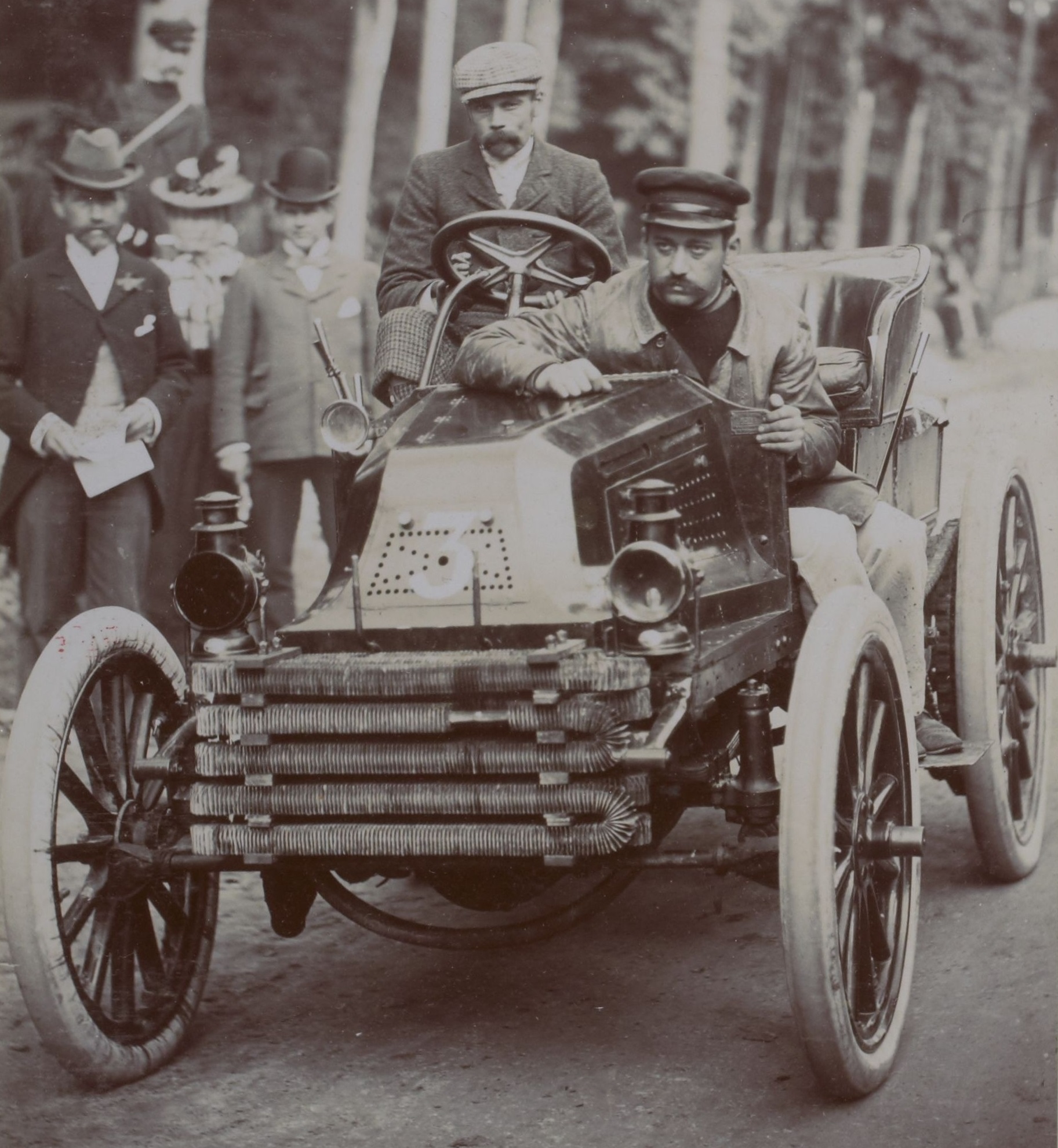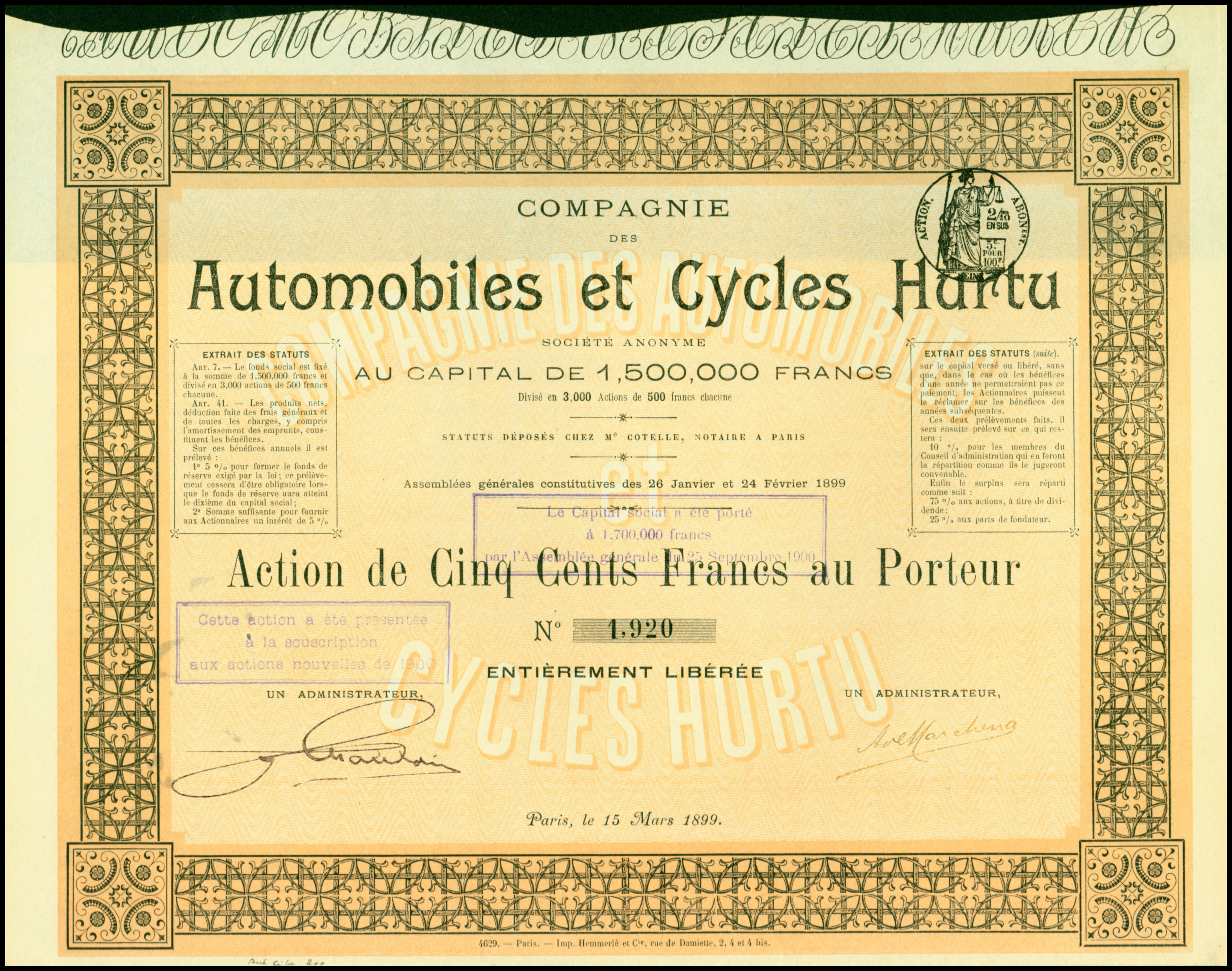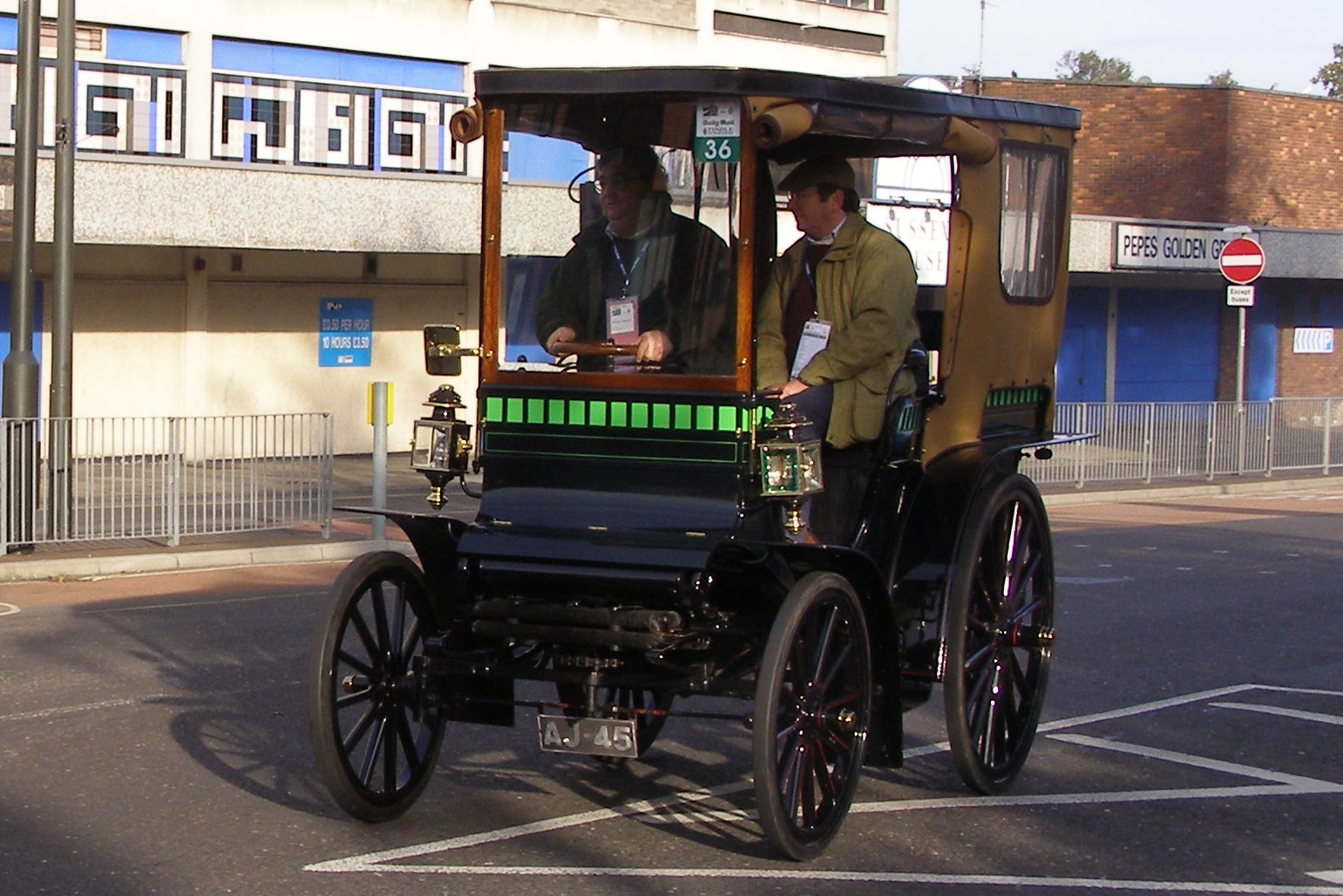|
Motor Racing At The 1900 Summer Olympics
Motor racing was contested at the 1900 Summer Olympics. Fourteen events were held in conjunction with the 1900 World's Fair. These events have generally not been classified as official, although the IOC The International Olympic Committee (IOC; french: link=no, Comité international olympique, ''CIO'') is a non-governmental sports organisation based in Lausanne, Switzerland. It is constituted in the form of an association under the Swiss ... has never decided which events were "Olympic" and which were not. Entries were by manufacturers rather than drivers and competitors' names were not adequately reported at the time. The exceptions are the two classes of the Paris-Toulouse-Paris race, one class of which was won by Louis Renault. Most events had only French competitors but there were some international entries. Medal summary References External links GB Athletics – Olympic Games Medallists – Other Sports – Demonstration & Unofficial SportsLA84 report {{Spo ... [...More Info...] [...Related Items...] OR: [Wikipedia] [Google] [Baidu] |
Motor Racing
Motorsport, motorsports or motor sport is a global term used to encompass the group of competitive sporting events which primarily involve the use of motorized vehicles. The terminology can also be used to describe forms of competition of two-wheeled motorised vehicles under the banner of motorcycle racing, and includes off-road racing such as motocross. Four- (or more) wheeled motorsport competition is globally governed by the Fédération Internationale de l'Automobile (FIA); and the Fédération Internationale de Motocyclisme (FIM) governs two-wheeled competition. Likewise, the Union Internationale Motonautique (UIM) governs powerboat racing while the Fédération Aéronautique Internationale (FAI) governs air sports, including aeroplane racing. All vehicles that participate in motorsports must adhere to the regulations that are set out by the respective global governing body. History In 1894, a French newspaper organised a race from Paris to Rouen and back, starting ... [...More Info...] [...Related Items...] OR: [Wikipedia] [Google] [Baidu] |
Panhard-Levassor
Panhard was a French motor vehicle manufacturer that began as one of the first makers of automobiles. It was a manufacturer of light tactical and military vehicles. Its final incarnation, now owned by Renault Trucks Defense, was formed by the acquisition of Panhard by Auverland in 2005, and then by Renault in 2012. In 2018 Renault Trucks Defense, ACMAT and Panhard combined under a single brand, Arquus. History Panhard was originally called Panhard et Levassor, and was established as an automobile manufacturing concern by René Panhard and Émile Levassor in 1887. Early years Panhard et Levassor sold their first automobile in 1890, based on a Daimler engine license. Levassor obtained his licence from Paris lawyer Edouard Sarazin, a friend and representative of Gottlieb Daimler's interests in France. Following Sarazin's 1887 death, Daimler commissioned Sarazin's widow Louise to carry on her late husband's agency. The Panhard et Levassor license was finalised by Louise, w ... [...More Info...] [...Related Items...] OR: [Wikipedia] [Google] [Baidu] |
Motor Racing Competitions
An engine or motor is a machine designed to convert one or more forms of energy into mechanical energy. Available energy sources include potential energy (e.g. energy of the Earth's gravitational field as exploited in hydroelectric power generation), heat energy (e.g. geothermal), chemical energy, electric potential and nuclear energy (from nuclear fission or nuclear fusion). Many of these processes generate heat as an intermediate energy form, so heat engines have special importance. Some natural processes, such as atmospheric convection cells convert environmental heat into motion (e.g. in the form of rising air currents). Mechanical energy is of particular importance in transportation, but also plays a role in many industrial processes such as cutting, grinding, crushing, and mixing. Mechanical heat engines convert heat into work via various thermodynamic processes. The internal combustion engine is perhaps the most common example of a mechanical heat engine, in which hea ... [...More Info...] [...Related Items...] OR: [Wikipedia] [Google] [Baidu] |
1900 Summer Olympics Events
Nineteen or 19 may refer to: * 19 (number), the natural number following 18 and preceding 20 * one of the years 19 BC, AD 19, 1919, 2019 Films * ''19'' (film), a 2001 Japanese film * ''Nineteen'' (film), a 1987 science fiction film Music * 19 (band), a Japanese pop music duo Albums * ''19'' (Adele album), 2008 * ''19'', a 2003 album by Alsou * ''19'', a 2006 album by Evan Yo * ''19'', a 2018 album by MHD * ''19'', one half of the double album ''63/19'' by Kool A.D. * ''Number Nineteen'', a 1971 album by American jazz pianist Mal Waldron * ''XIX'' (EP), a 2019 EP by 1the9 Songs * "19" (song), a 1985 song by British musician Paul Hardcastle. * "Nineteen", a song by Bad4Good from the 1992 album ''Refugee'' * "Nineteen", a song by Karma to Burn from the 2001 album ''Almost Heathen''. * "Nineteen" (song), a 2007 song by American singer Billy Ray Cyrus. * "Nineteen", a song by Tegan and Sara from the 2007 album '' The Con''. * "XIX" (song), a 2014 song by Slipknot. ... [...More Info...] [...Related Items...] OR: [Wikipedia] [Google] [Baidu] |
Mors (automobile)
The Mors automobile factory was an early French car manufacturer. It was one of the first to take part in automobile racing, beginning in 1897, due to the belief of the company founder, Émile Mors, in racing's technical and promotional benefits. By the turn of the century, automobile racing had become largely a contest between Mors and Panhard et Levassor. Technical achievements Mors was one of the first automobiles to use the V engine configuration. The Mors 60 horsepower Grand Prix car was powered by a 9.2-litre V4 side valve engine, with magneto ignition and dry sump lubrication, which could reach 950 rpm. The car had a steel chassis and a four-speed transmission that drove the rear wheels via chain drive, and rear-wheel brakes. In 1902, Mors added pneumatic shock absorbers to their cars, which represented a great leap forward given the quality of the roads and racetracks at the time. With this car, Henri Fournier was able to win the highly significant Paris-Berl ... [...More Info...] [...Related Items...] OR: [Wikipedia] [Google] [Baidu] |
Alfred Velghe
Alfred Velghe (16 June 1870 – 28 February 1904) was a Belgian-French racing driver and cyclist who competed under the pseudonym Levegh. Biography On 1 October 1899, Levegh drove a Mors in a race between Bordeaux and Biarritz (232 km) which he won. He participated in the Gordon Bennett Cup car in 1900 and 1901. He also won the 'Large Car' class of the Paris-Toulouse-Paris race, held in 1900 as an unofficial Olympic sport, in 20h 50 '9 ". Velghe's nephew, Pierre Levegh Pierre Eugène Alfred Bouillin (22 December 1905 – 11 June 1955) was a French sportsman and racing driver. He took the racing name Pierre Levegh in memory of his uncle, a pioneering driver who died in 1904. Levegh died in the 1955 Le Mans disas ..., was also a racing driver. References 1870 births 1904 deaths French racing drivers {{England-autoracing-bio-stub ... [...More Info...] [...Related Items...] OR: [Wikipedia] [Google] [Baidu] |
Ateliers De Construction Mecanique L'Aster
L'Aster, Aster, Ateliers de Construction Mecanique l'Aster, was a French manufacturer of automobiles and the leading supplier of engines to other manufacturers from the late 1890s until circa 1910/12. Although primarily known as an engine mass manufacturer the company also produced chassis for coach-works and a complete range of components. Aster produced a range of engines including: stationary motors; electricity generators; automobile motors; marine engines and aero engines. There were air-cooled and water cooled Gasoline motors, Kerosene motors, and Gas Motors. Among the companies for which Aster produced engines and other parts were Ache Frères, Achilles, Argyll, Ariès, Aster-Newey, Automobiles Barré, Bolide, Belhaven, Bij 't Vuur, Century, Clément, Darracq, Dennis, Durham-Churchill, Ernst, Excelsior, Gladiator, Hanzer, Hoflack, Hurtu, Korn et Latil, Lacoste & Battmann, La Torpille, Lucerna, Newey Aster, Société Parisienne, Passy-Thellier, Pearson, Prun ... [...More Info...] [...Related Items...] OR: [Wikipedia] [Google] [Baidu] |
De Dion-Bouton
De Dion-Bouton was a French automobile manufacturer and railcar manufacturer operating from 1883 to 1953. The company was founded by the Marquis Jules-Albert de Dion, Georges Bouton, and Bouton's brother-in-law Charles Trépardoux. Steam cars The company was formed in 1883 after de Dion saw a toy locomotive in a store window in 1881 and asked the toymakers to build another. Engineers Bouton and Trépardoux had been eking out a living with scientific toys at a shop in the Passage de Léon, near "rue de la Chapelle" in Paris.Wise, p. 510. Trépardoux had long dreamed of building a steam car, but neither could afford it. De Dion, already inspired by steam (in the form of rail locomotives)Georgano, p. 27. and with ample money, agreed, and De Dion, Bouton et Trépardoux was formed in Paris in 1883. This became the De Dion-Bouton automobile company, the world's largest automobile manufacturer for a time, becoming well known for their quality, reliability, and durability. Before 1883 ... [...More Info...] [...Related Items...] OR: [Wikipedia] [Google] [Baidu] |
Hurtu
Hurtu was a pioneering French car made by Diligeon et Cie based in Albert, Somme from 1896 to 1930. As well as cars, the company also made sewing machines and bicycles. The company was founded in 1880 as Hurtu, Hautin et Diligeon as a maker of sewing machines but soon added machine tools and bicycles to their range. In 1895 E. Diligeon bought out his partners and renamed the company Diligeon et Cie but continued to use the Hurtu name on his products. They made their first car in 1896, a licence built version of the Leon Bollée tricar. They ended up making more of these then Leon Bollée themselves. Four wheel vehicles followed in 1897 with a close copy of the German Benz, a version of which was also made in England by Belsize Motors in Manchester. In 1899 the company was re-organised and renamed as the Compagnie des Automobiles et Cycles Hurtu. In 1900 the Benz type car was replaced by a new model powered by a De Dion-Bouton De Dion-Bouton was a French automobile manufacture ... [...More Info...] [...Related Items...] OR: [Wikipedia] [Google] [Baidu] |
1900 Summer Olympics
The 1900 Summer Olympics (french: Jeux olympiques d'été de 1900, link=no), today officially known as the Games of the II Olympiad () and also known as Paris 1900, were an international multi-sport event that took place in Paris, France, from 14 May to 28 October 1900. No opening or closing ceremonies were held. At the Sorbonne (building), Sorbonne conference of 1894, Pierre de Coubertin proposed that the Olympic Games should take place in Paris in 1900. However, the delegates to the conference were unwilling to wait six years, and lobbied to hold the first games in 1896. A decision was made to hold the 1896 Summer Olympics, first Olympic Games in 1896 in Athens and have Paris host the second Games. The Games were held as part of the Exposition Universelle (1900), 1900 World's Fair. In total, 1226 competitors took part in 19 different sports. This number relies on certain assumptions about which events were and were not "Olympic". Many athletes, some of whom had won events, we ... [...More Info...] [...Related Items...] OR: [Wikipedia] [Google] [Baidu] |
Serpollet
Gardner-Serpollet was a French manufacturer of steam-powered cars in the early 20th century. Léon Serpollet is credited with inventing and perfecting the flash boiler in the late 1800s.Full Steam Ahead – Leon Serpollet The Old Motor, February 4, 2014 Retrieved July 9, 2015 Serpollet produced his own automobiles under the name Serpollet and Gardner-Serpollet until his death in 1907. Origins Léon Serpollet was born in the department of France, and went on to establish his factory with his brother Henri on the rue des Cloÿs in the |
Delahaye
Delahaye was a family-owned automobile manufacturing company, founded by Émile Delahaye in 1894 in Tours, France. Manufacturing was moved to Paris following incorporation with two unrelated brothers-in-law as equal partners in 1898. The company built a low volume line of limited production luxury cars with coachbuilt bodies; trucks; utility and commercial vehicles; busses; and fire-trucks. Delahaye made a number of technical innovations in its early years; and, after establishing a racing department in 1932, the company came to particular prominence in France in the mid-to-late 1930s, with its Type 138, Type 135SC, and type 145 cars winning numerous races, and setting International records. The company faced setbacks due to the Second World War, and was taken over by amalgamation with arch competitor Hotchkiss in 1954. Both were taken over by the Brandt organization, within mere months, with automotive product manufacturing ended. History Formative years Engineer Émile Delah ... [...More Info...] [...Related Items...] OR: [Wikipedia] [Google] [Baidu] |






_finished_1st%2C_ruled_ineligible_for_prize.jpg)

1A_Square.jpg)

